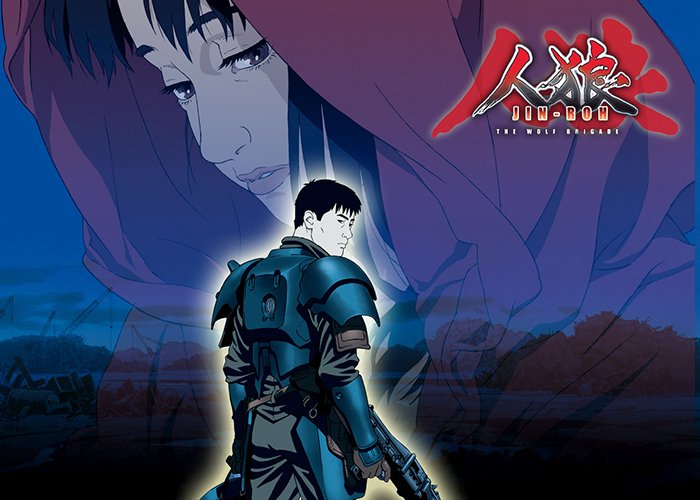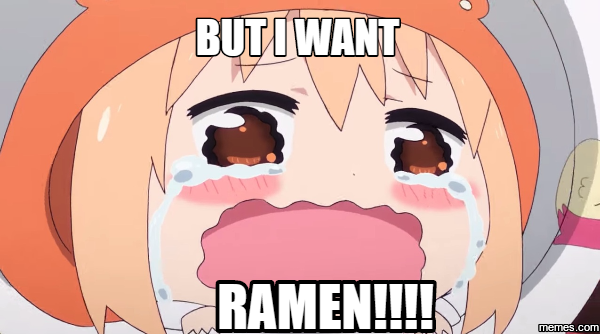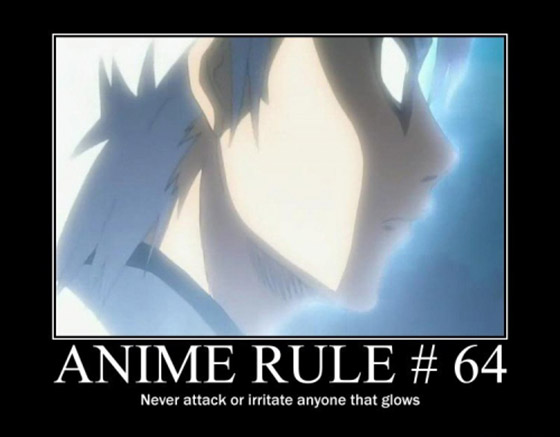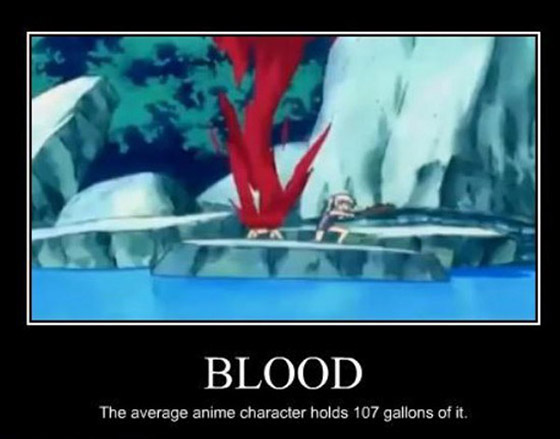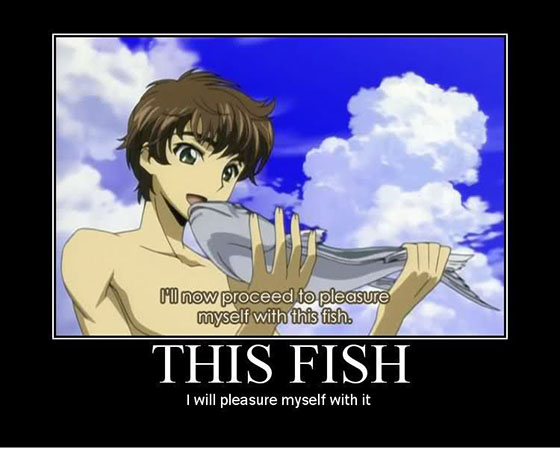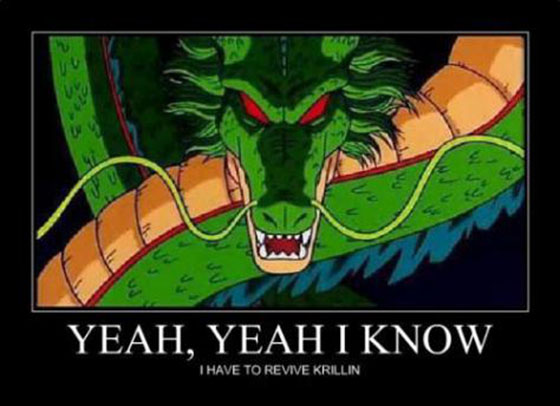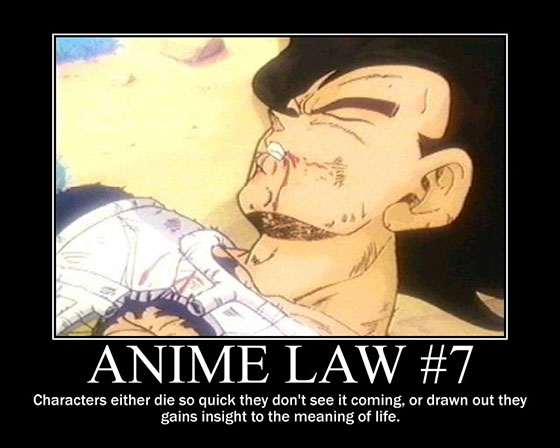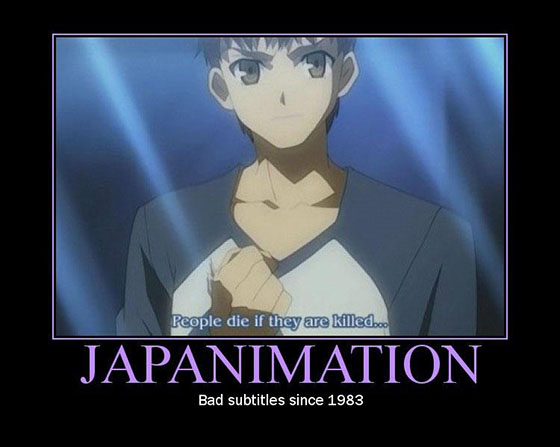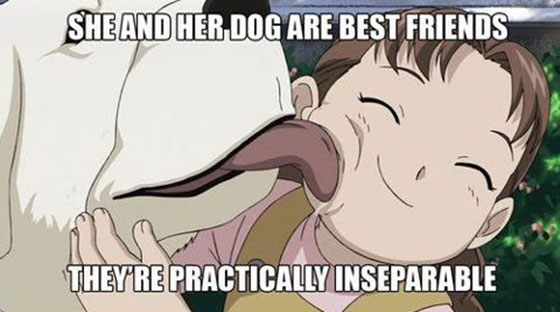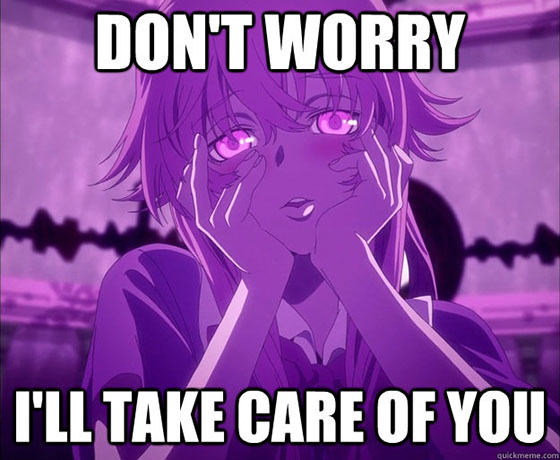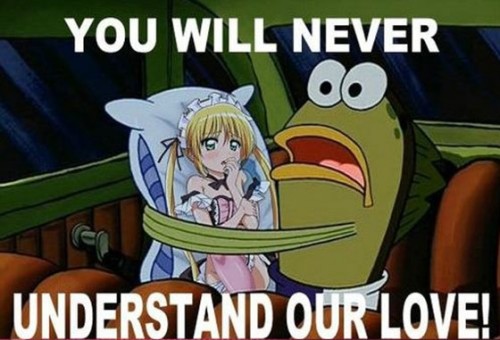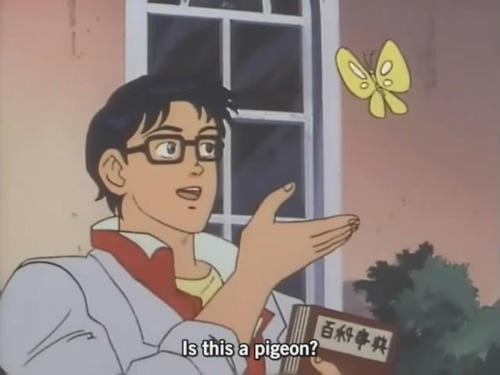[ad_top1]
These days, a significant number of international anime fans around the world get their information through the Internet and that of course is a great thing. However, what about a time when there was no Internet to help non-Japanese fans discover anime? Of course, you could buy anime on VHS back in the day but they were rare and very expensive, and most rental stores carried hentai or other adult related material. But what other avenues were there to find anime?
The late 1990s/early 2000s was a magical period for a good number of older American anime fans. During that time, Cartoon Network successfully pushed a new block known as Toonami. It had its ups and downs, but it was Toonami that helped bring anime and its identity to mainstream television. Even before the prime of Toonami, anime always had a presence on American television and today's Editorial Tuesday will be a history lesson of Japanese anime on US airwaves.
[ad_top2 class="mt40"]
The Beginning: Astro Boy and Gigantor
![(Photo 1) A History of Japanese Anime on American Television]()
It is almost certain that most anime fans of all ages are aware of Tezuka Osamu’s (the granddaddy of Japanese manga AND anime) classic, Astro Boy, or Tetsuwan Atom in Japan. Shortly after the anime debuted in Japan in 1963, Astro Boy was picked up and aired by NBC studios. However, in order to adapt to western standards and appeal to American audiences, names and plot points needed to be changed. This practice of westernizing anime adaptations would actually be standard practice even to this day.
Even though a large majority of international audiences are aware that Pokemon is Japanese in origin, it still maintains a practice of westernizing names and plot points to appeal to wider audiences, and certain original elements (such as how regions are named in the Japanese version to reflect Japan’s geography) wouldn't transition due to distinct cultural and society differences.
Another popular post-World War II anime that successfully hit the US airwaves is Gigantor, or Tetsujin 28 in Japan, one of the original mech anime. Even though the original Japanese version takes place in modern times in context to its original broadcast in the 1960s, the American version took some significant creative liberties and made Gigantor take place in the year 2000!
Go Speed Racer, Go!
Probably the most famous 1960s anime of all time is Tatsunoko’s Mach Go Go Go, or most famously known as Speed Racer to international audiences, which has a reputation of its rather speedy and over dramatic dub (in addition to its iconic opening theme song). Due to the settings being distinctively non-Japanese and the material taking influence from international cinema (such as the Mach 5 being influenced by 007’s Aston Martin DB5), the transition for American audiences was rather easy. Other than the name changes, the dub masterfully matches the original Japanese dialog literally word for word, and is essentially true to the original Japanese in context to plot points.
The 1970s: Battle of the Planets
![(Photo 3) A History of Japanese Anime on American Television]()
With the success of the previously shared titles, anime continued to sneak into American airwaves, but very few American audiences were aware of their Japanese origins. So what anime came to the US during the era of disco that still has a large impact to this day?
For the older half of Generation X, it has to be Battle of the Planets, or Gatchaman, also made by Tatsunoko. Due to society differences and the values of an older time period, many key elements from the original source material were cut out. Naturally, with the violence and the transgender nature of its villain, a lot had to be changed in the programming aimed for American children, and its original content would have caused a moral panic.
As a matter of fact, the name Battle of the Planets itself was meant to be a cash-in on the popularity of Star Wars, which debuted a year before the US broadcast of this respective hit anime. Although the original Gatchaman Japanese series was based on Earth, the American version somehow changed it to being about traveling to other (Earth-like) planets.
Even though modern (and maybe younger) anime fans would be outraged by these changes, it didn't stop it from achieving numerous successes in being recognized as one of the best animated programs of all time from pop culture news sources, such as Wizard Magazine and IGN. Alex Ross, who many American comic fans like to say is the Norman Rockwell of his trade, happens to be a fan of this anime and even contributed art to DVD and VHS releases in the past.
The 1980s: Star Blazers, Robotech, Voltron
![(Photo 8) A History of Japanese Anime on American Television]()
In the 1980s, in which many veteran fans claim to be the 'golden age of anime', more Americanized titles hit the airwaves, but were still subjected to censoring for American audiences. One of the first titles from this time period is Star Blazers (though it was first broadcasted in the 1970s in Japan it became famous as an 80s anime in America), or Space Battleship Yamato. Naturally, with the original Japanese name and the ship itself being a reference to a sunken World War II battleship, America couldn't present something controversial to domestic audiences so names had to be changed.
What made Star Blazers distinct is that it was one of the first anime to be aired in the US, which had a serialized story as opposed to being episodic. Despite this format being new to American audiences, it was a success and paved way for anime of similar nature to come to the US.
The biggest US broadcasted anime of the 1980s and to younger Generation X audiences is Robotech. This is probably one the oldest anime that has received any controversy for its censoring, and is still controversial towards its fans to this very day! Of course, one side are the purists, while the other side claims that at the time, these changes were necessary to help anime grow in the US. However, thanks to Harmony Gold and other legal issues, other series being released in the US has become a struggle.
And the anime that is most fondly remembered by the Oregon Trail generation (the generation between Generation X and the millennials) is probably, Voltron, or originally known as, GoLion. The art style resonated with audiences, most especially with the Voltron mech itself, but most viewers were still not aware of its original Japanese origins, and that it had VERY graphic violence in its original Japanese broadcast. It had a unique story, exciting characters, and a very exciting soundtrack. But after watching GoLion and how dark and violent it is, it can be difficult to go back to Voltron despite loving it as a child.
Still, most anime titles released in the US up to this point were not advertised as being from Japan and only just a decade later, would mainstream audiences get an idea of what anime is in its purest form.
The 1990s: The Beginning of the Awareness of Anime
![(Photo 4) A History of Japanese Anime on American Television]()
As time progressed to the 1990s, many anime continued to hit the airwaves but with a new twist, audiences were finally given information that the hits at the time, such as Ronin Warriors and Sailor Moon, were originally from Japan. Despite this, changes were still made. Ronin Warriors was initially meant to be released under its original Japanese title, Samurai Troopers.
Due to legal reasons (with Saban owning the rights to shows, such as Super Human Samurai Cyber Squad and VR Troopers), the title had to be changed to avoid any issues. In addition, character names were still changed but still kept a Japanese feel to it. It was one of the first anime on TV, despite all of its changes, which managed to keep its “Japanese-ness.”
Then on September 11, 1995, (Wow! That's now over twenty years ago!) after being a huge hit in Asia, Europe, and South America, Sailor Moon finally hit American shores. Even though the character names and certain plot points were changed, Sailor Moon still gave American viewers a taste of school life in Japan with juken jigoku (examination hell), sailor uniforms and gakurans, Tokyo Tower, the swear drop trope, Japanese style bentos, big eyes, glittering nudity transformation scenes, crazy hair styles, and everything that virtually defines anime on a surface level.
Plus, the theme song manages to capture most of the melody of the original Japanese version, and somehow make it appropriate for North American audiences. Despite Sailor Moon’s aggressive marketing campaign, it only managed to capture a cult audience and was on hiatus between 1996 and 1999.
Shortly before the coming of Toonami, what also helped spread the awareness of anime during the 1990s was the Sci-Fi channel’s (now called SyFy) Saturday anime block. It aired some of the big titles from the 1970s like Galaxy Expresss 999, to the hits of its time such as, Tenchi Muyo! In Love. In addition, it also provided a gateway to other classics (Akira, Roujin Z and Robot Carnival). Unfortunately, this block only aired at 1am but effectively appealed to the building cult audience.
Pokemon The First Game Changer in Mainstreaming Anime in the US
![(Photo 5) A History of Japanese Anime on American Television]()
Then in 1998, with Nintendo’s genius marketing, Pokemon finally hit US airwaves and became an instant and an on-going success. Despite its changes from the food (such as rice balls becoming jelly donuts in the US release), understanding its need for international appeal, many fans went with the changes and felt a sense of faithfulness to the nature of its source material.
After Pokemon, other anime of similar nature for children followed such as Digimon and Yu-Gi-Oh! But it was not the anime that became a success, it was a franchise as a whole. Pokemon is not just anime, but of course games on Nintendo’s consoles and trading card game. This would also apply to other franchises such as Yu-gi-oh!, Digimon, and Megaman Battle Network (Rockman.exe in Japan).
Plus, other anime based on legendary game franchise continued to be broadcasted on American TV such as Sonic X, but its dub became a long source of controversy, which is another topic in itself.
Toonami and The Mainstreaming of Anime
![(Photo 6) A History of Japanese Anime on American Television]()
Between 1999 and 2000, Cartoon Network took advantage of the cult followings of Sailor Moon and Dragon Ball Z and brought further popularity through an aggressive marketing campaign of their rising Toonami block, which previously aired non-anime shows such as the new, Johnny Quest.
Thanks to other Internet campaigns back in the day such as, Save Our Sailors, or SOS for short, with the exception of the Stars season, remaining episodes of Sailor Moon were broadcasted in English on Toonami. Despite some of the titles that would soon follow such as Gundam Wing, Outlaw Star and Tenchi Muyo being relatively old in Japan by five to ten years, they were fresh to American audiences and each found great success.
Through Gundam Wing, Toonami started a midnight block broadcast where it would have an unedited broadcast that included more violence and swearing. Later, this practice would pave way for its Adult Swim block. What was also unique about Gundam Wing is that it was also one of the first anime that kept the original Japanese tracks of songs such as Just Communication as background music during its broadcast. It was the beginning of American audiences seeing anime for what it is, and not as a filter for Americanization.
Adult Swim: From Cowboy Bebop to Attack on Titan
![(Photo 7) A History of Japanese Anime on American Television]()
In the early 2000s, thanks to building a mature audience through some of its anime titles, Cartoon Network started its Adult Swim block, which also includes original content and anime for its target audience. One of the most successful anime titles that helped build that brand is Cowboy Bebop, which many fans consider to be one of the best anime of all time. Cowboy Bebop (despite already having a strong popularity through the home video market) managed to expand its popularity through a TV broadcast and was repeatedly aired due to its high ratings and excellent reception.
Later on, the success of the broadcast of mature oriented anime would allow the network to broadcast other critical hits such as Attack on Titan and Parasyte not too long after their Japanese broadcasts (despite those titles being aimed for teens in Japan). With a season 2 of Attack on Titan underway in Japan, Cartoon Network will soon follow and most likely air it. In addition, Adult Swim would also air anime influenced shows such as Afro Samurai and The Boondocks.
Afro Samurai, based on a sleeper-hit manga by Okazaki Takashi, took years to get the anime version to launch. With its pilot/pitch trailer somehow managing to fall into the hands of Samuel L. Jackson, his influence resulted in getting the project off the ground, becoming an instant hit in America, while its popularity is still non-existent in Japan.
Thanks to the fans and Cartoon Network
Eventually, Cartoon Network became the TV haven for anime. Yes, there were network TV broadcasted anime after Toonami became a hit in 2000, but with some hit titles such as One Piece, the edits (and infamous rap opening) was subjected to very heavy negative criticisms from the established hardcore fan base and eventually got cancelled.
According to dub actor Greg Ayers, he says that the Japanese executives approved the edits in order to get the show licensed and exposed to American audiences no matter what. However, some Japanese studios have openly criticized the editing process for western releases of Miyazaki Hayao films after the fiasco of the first dub of Naussica.
[ad_middle class="mt40"]
Overcoming Controversies
With different generations and different values, fans will naturally have conflicting opinions on whether or not anime should be westernized. Of course, anime is not without its purists and the purists have legitimate reasons for their views. Today, with the exception of titles aimed for children, such as Pokemon, changes are necessary but the franchise still resonates with audiences. Dragon Ball is distinct and unique because it is Japanese. To many fans around the world, it was their gateway to anime.
However, some fans to this day still have feelings over westernizing anime for US broadcast. With more American audiences being aware of anime through other mediums such as No Doubt’s tribute to Kite, Kanye West’s tribute to Akira, Daft Punk’s Interatella 5555 album, The Simpsons’ tribute to Miyazaki, and South Park’s numerous spoof of Japanese animation, licensors need to give audience more credit and let the people see anime for what it is and embrace it.
To The Future
With most US households having some form of Internet connection, network sites such as Hulu, Netflix, and Crunchyroll are all the rage. Though Hulu and Netflix cater to non-anime audiences and carry many hit titles throughout the ages, Crunchyroll provides fans access to all the hit anime going on in Japan being uploaded 24 hours within its Japanese broadcast. Heck, Sailor Moon Crystal is broadcasted for free all over the world and this could pave way for other future original and/or retro titles. With Japanese studios becoming more aware of anime’s rising popularity, the probability of more anime like Sailor Moon Crystal being broadcasted internationally on the internet is the future for anime on TV.
As of 2014 according to major news sources such as the Washington Post, due to FCC standards of demanding more educational content on network TV, anime no longer airs network TV let alone the age of Saturday morning cartoons. These standards were put in place in the 1990s and as a result, cable networks (not subjugated to FCC rules) started to pick up the slack and provide viewers channels such as Cartoon Network. With the world as it is today, there is also the Internet and legal streaming sites which in turn made network broadcasting for anime no longer necessary as a whole.
TV still has a significant influence. Even when Tenchi Muyo! was broadcasted on Toonami, it was already a cult hit on VHS and its broadcast helped spread the audience. TV is still a powerful medium, even with the rise of the Internet. Though, Naruto was already big through the fansub scene, it only got bigger when it aired on TV. The only difference is that these days, audiences don't have to wait up to five years after its Japanese broadcast.
Before most audiences knew what anime was, they already had exposure to it. With the young generation today, they have that awareness from the very beginning and can help them find more anime. While with some older folks, they just thought of Battle of the Planets and Robotech as generic cartoons but still something unique while not being unable to pinpoint why they were unique to begin with. .
What About Your Regions or Countries?
Anime has a special history all over the world. Before Dragon Ball Z and Sailor Moon were big in America, they were already popular in Europe and Asia. Saint Seiya was a huge hit in Latin America and Western Europe, but never managed to get a big audience on America. Voltes V is largely loved in the Philippines by many generations.
If there are any non-Americans reading this, please share with other readers the history of anime on TV in your respective country. As we just shared, every country has a unique relationship with anime and it would be nice to read a first hand experience of it. So to all our readers around the world, please share a comment with your history of anime in your home nation. What changes were made to anime in your country?
[author author_id="010" author=""]
[ad_bottom class="mt40"]













